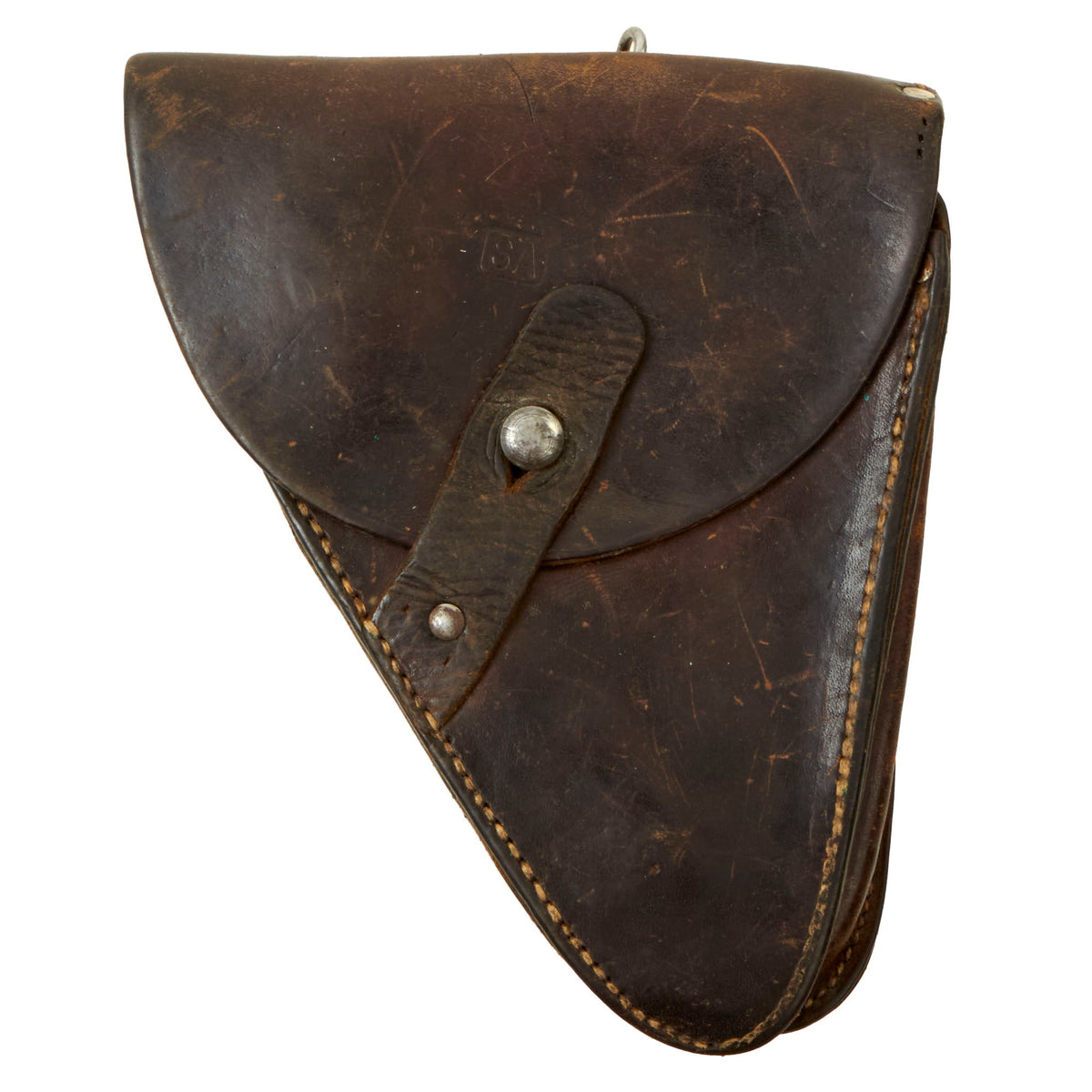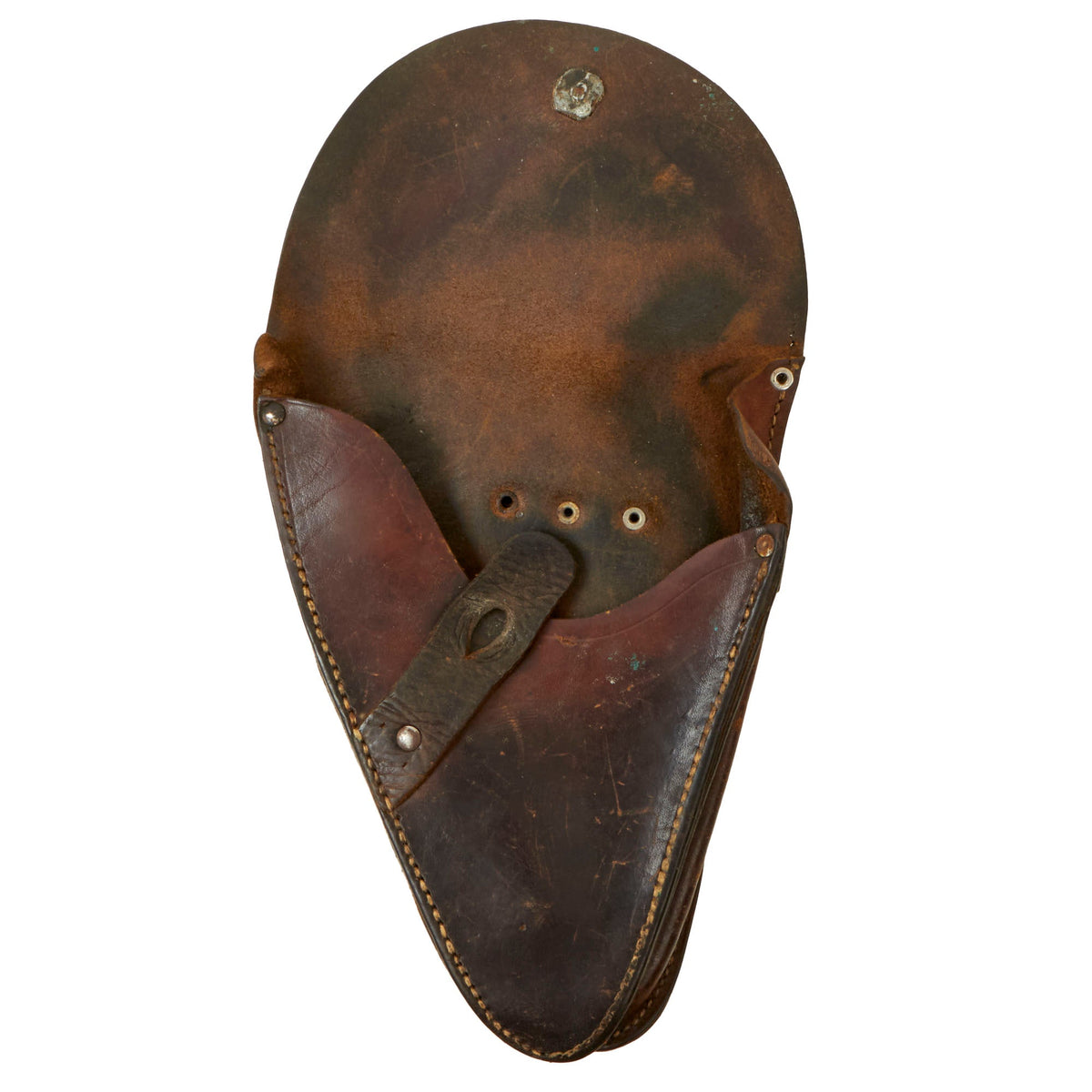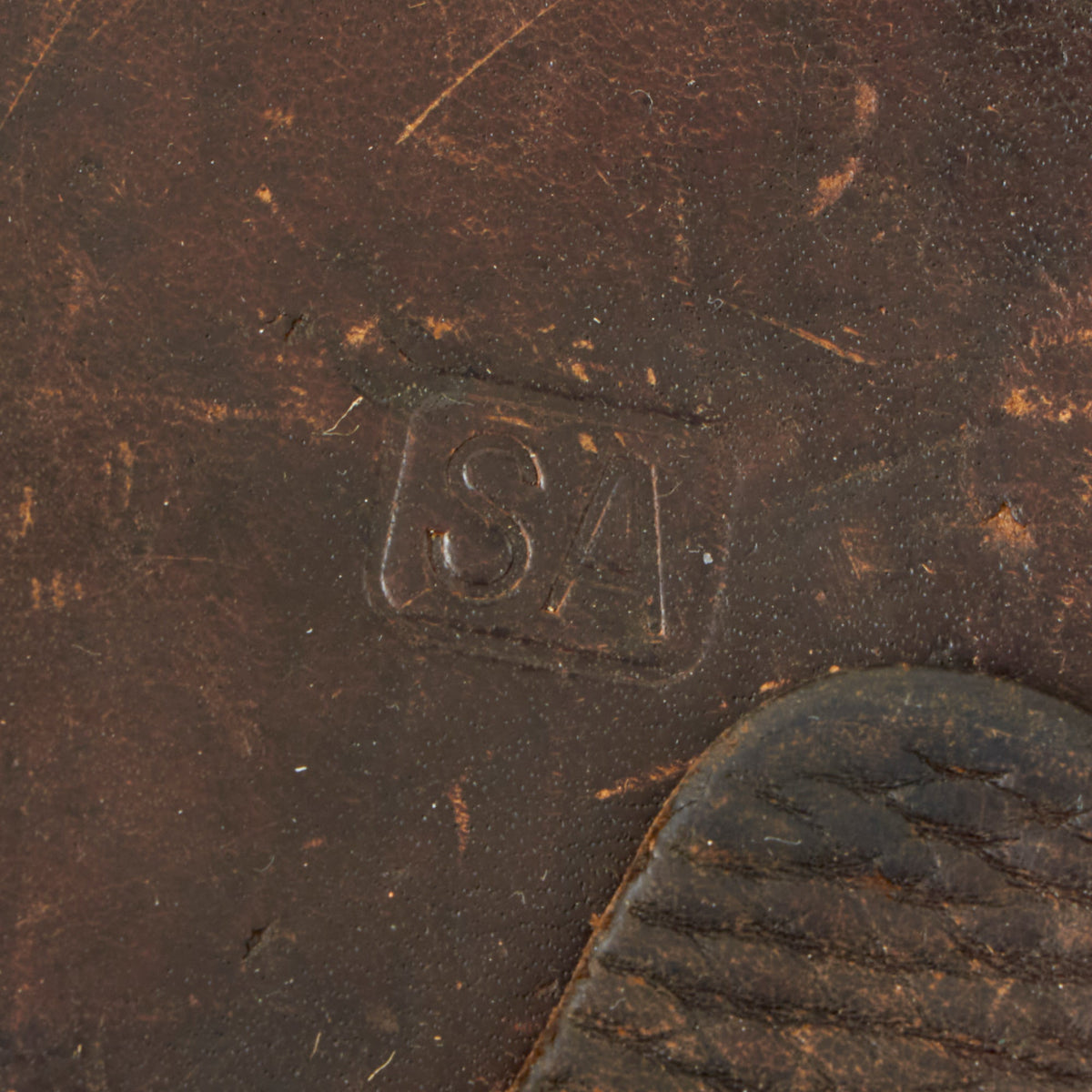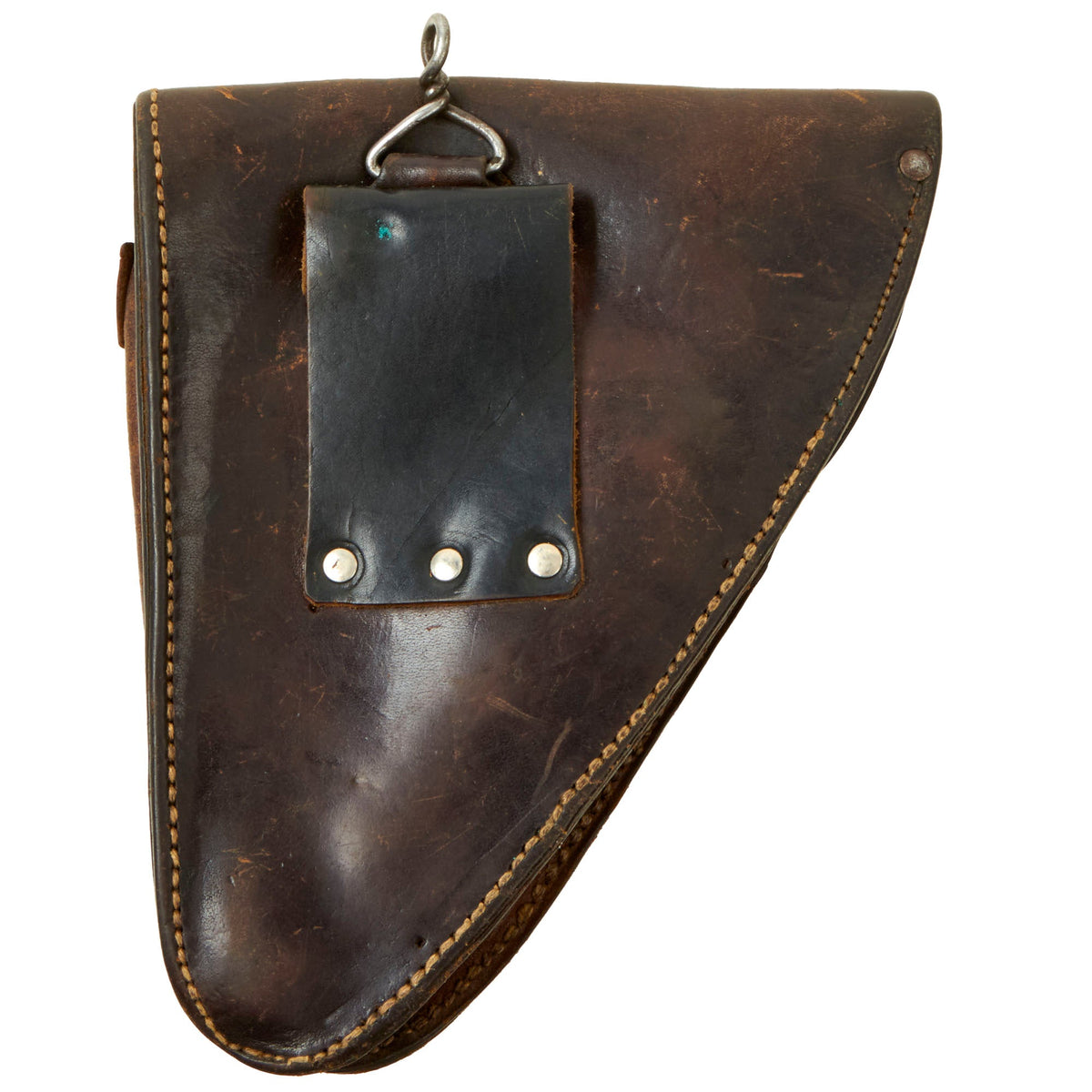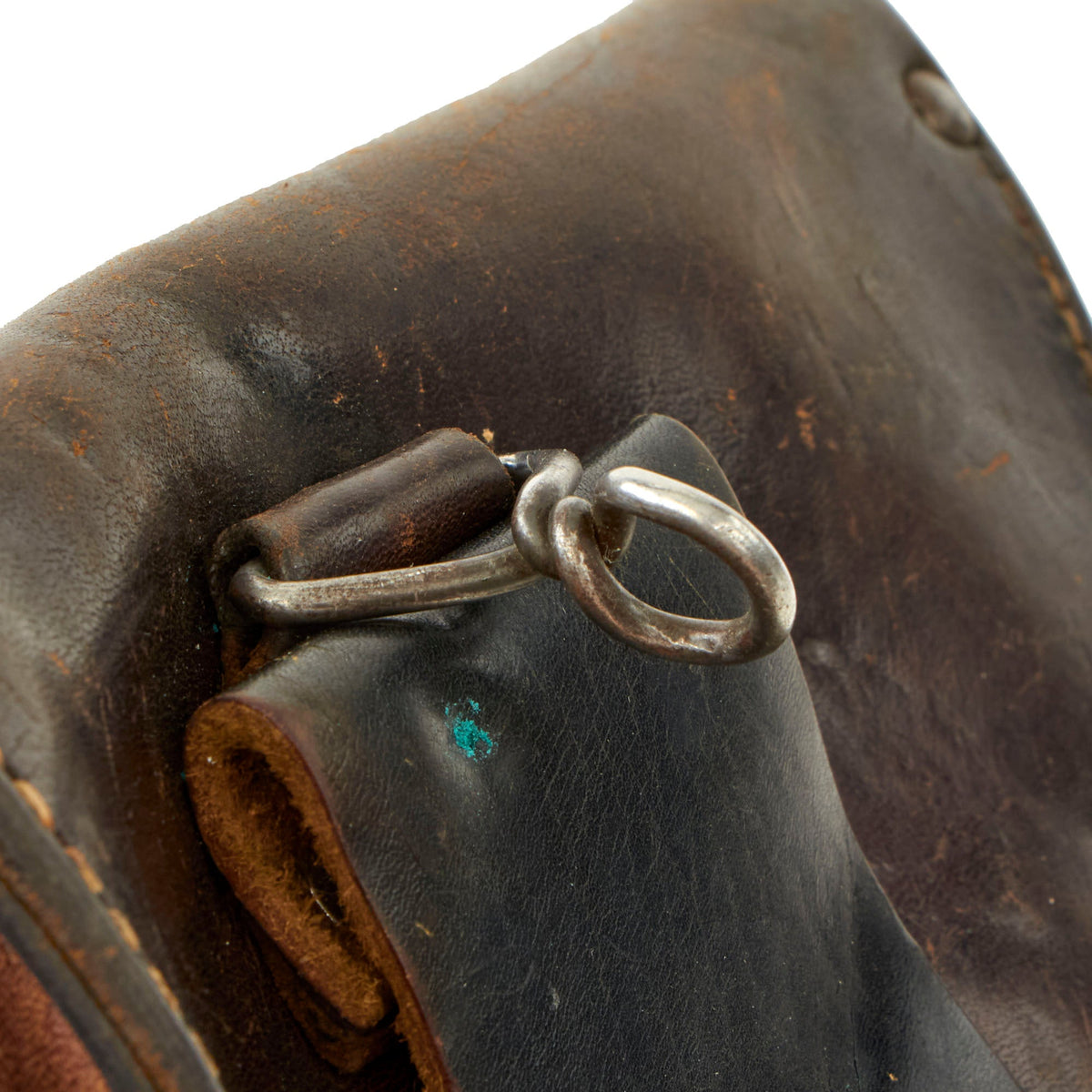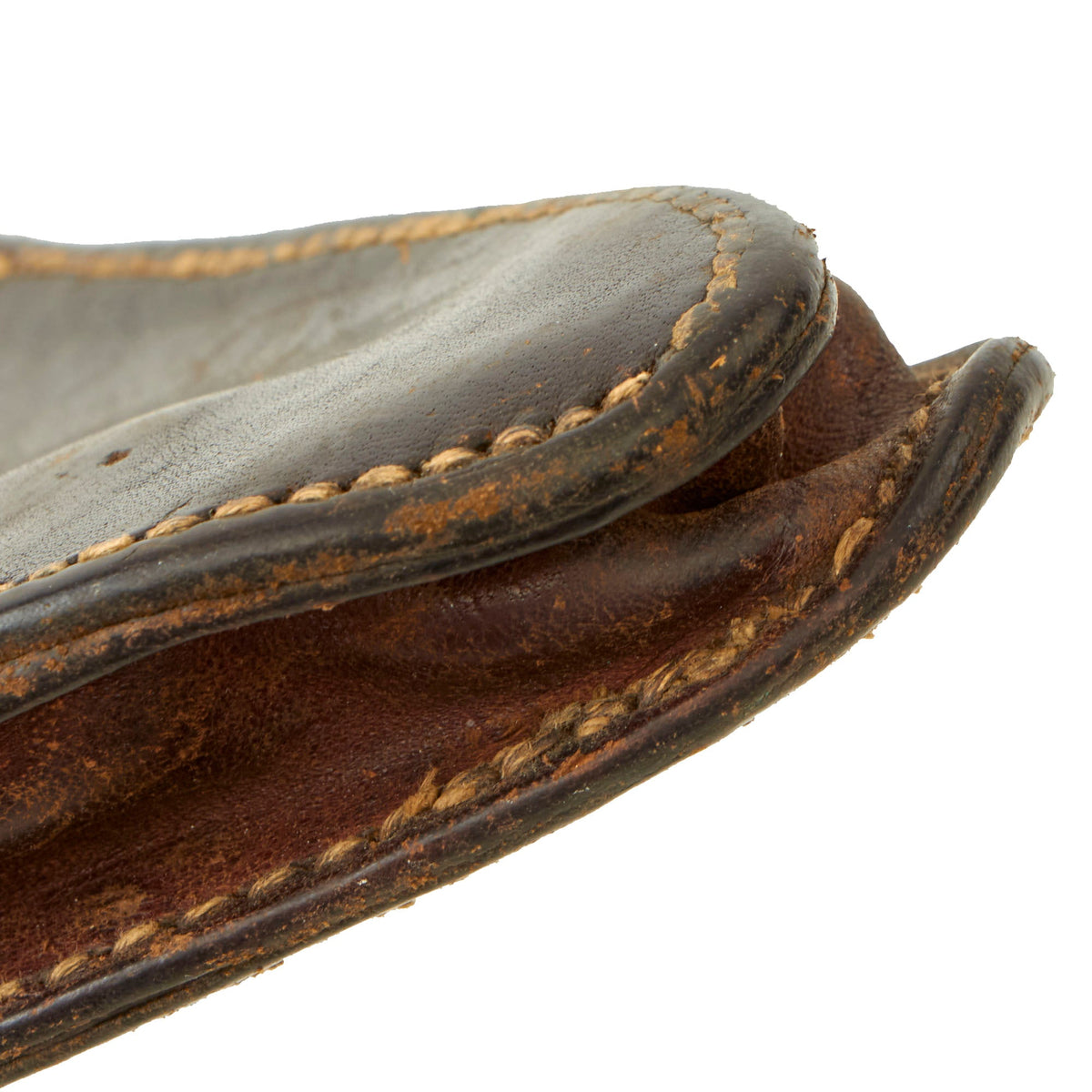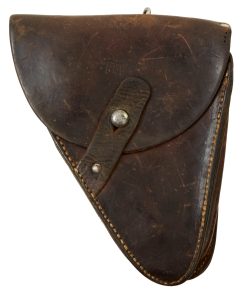Original French WWI Model 1916 Ruby Pistol Holster – 1917 Dated Original Items
$ 295,00 $ 118,00
Original Item: Only One Available. This is an extremely scarce WWI-dated holster for the Ruby pistol. The self-loading Ruby pistol is best known as a French World War I sidearm, the Pistolet Automatique de 7 millim.65 genre “Ruby”. A very international piece of weaponry, it was closely modeled after John Browning’s M1903 design.
In 1914, just before the start of the First World War, Gabilondo started manufacture of a sturdy self-loading pistol based on the Browning Model 1903 and chambered for the 7.65mm Browning/.32 ACP cartridge. Unusual for the time, the magazine capacity was nine shots instead of the usual six or seven. Ruby-types continued to be used until the end of World War II, particularly by Spanish and French Maquis, as well as their Vichy opponents.
The holster is in great shape retaining its original securing strap and belt loop with the unique French suspender attachment. Under the flap, the French maker stamp is visible, with 1917 in the middle, confirming this as a WWI-issue Ruby holster. The holster has an SA stamped on the front. In 1919, Finland bought 10,000 Ruby pistols while in France, becoming the first semi-pistol issued to the Finnish military.
During World War 1 both French and Italian Armed Forces had shortage of pistols and were buying this quite heavy 7,65 mm blowback pistol manufactured around Eibar in Spain. During World War 1 France suffered from shortage of military small arms and found itself unable to provide enough pistols for its troops, hence it approved this pistol design manufactured by Spanish company Gabilondo y Urresti as Pistolet Automatique de 7 millimet. 65 genre “Ruby”. Original French order for Gabilondo y Urresti was for 10,000 pistols a month, but this ballooned first to 30,000 a month and later to 50,000 a month – much beyond the production capacity of the company. Hence Gabilondo y Urresti re-arranged production by getting four other Spanish companies as its partners for filling the contract. Ultimately France ended up making contracts with 45 Spanish companies total and Gabilondo y Urresti also had seven partner companies taking part in its contract. The Spanish companies involved were all small companies in Eibar and Guernica in Basque region, which became major production hub of this pistol during World War 1.
Having large number of small-scale manufacturers with varying production quality and quality control caused pretty serious problems. While there were blueprints and approved standard pistol design for this pistol, in reality manufacturers taking part in its production ended up producing slight variations of the pistol design and parts of pistols made by different manufacturers were not interchangeable – there was no spare part supply or even cannibalising parts from broken pistols to repair some of them did not necessarily work. When 7,65 mm x 17 ammunition used was also quite weak it was no surprise that France was willing to sell these pistols after World War 1, although the pistol also remained in French use in World War 2 and beyond. What is known the total number of pistols approved by French military during World War 1 was about 710,000. While French military was the main customer, there were also others. Serbia had received 5,000 Ruby pistols. Later Yugoslavia bought more between 1931 – 1933 – naming them as Pistolj 7,65 mm/VTZ 1933. French manufacturer Unique manufactured higher quality versions of Ruby pistol after World War 1.
Fast Shipping with Professional Packaging
Thanks to our longstanding association with UPS FedEx DHL, and other major international carriers, we are able to provide a range of shipping options. Our warehouse staff is expertly trained and will wrap your products according to our exact and precise specifications. Prior to shipping, your goods will be thoroughly examined and securely secured. We ship to thousands clients each day across multiple countries. This shows how we're dedicated to be the largest retailer on the internet. Warehouses and distribution centres can be located throughout Europe as well as the USA.
Note: Orders with more than one item will be assigned a processing date depending on the item.
Before shipping before shipping, we'll conduct a thorough inspection of the items you have ordered. Today, the majority of orders will be delivered within 48 hours. The delivery time will be between 3-7 days.
Returns
The stock is dynamic and we cannot completely manage it because multiple stakeholders are involved, including our factory and warehouse. So the actual stock may alter at any time. It's possible that you may not receive your order once the order has been made.
Our policy is valid for a period of 30 days. If you don't receive the product within 30 days, we are not able to issue a refund or an exchange.
You can only return an item if it is unused and in the same state as the day you received it. You must have the item in its original packaging.
Related products
Uncategorized
Uncategorized
Uncategorized
Uncategorized
Uncategorized
Armoured Fighting Vehicles of the World: AFVs of World War One (Hardcover Book) New Made Items
Uncategorized
Uncategorized
Uncategorized
Uncategorized
Uncategorized
Uncategorized
Band of Brothers ORIGINAL GERMAN WWII Le. F.H. 18 10.5cm ARTILLERY PIECE Original Items
Uncategorized
Uncategorized
Uncategorized
Uncategorized
Armored Burgonet Helmet & Polearm from Scottish Castle Leith Hall Circa 1700 Original Items
Uncategorized
Uncategorized
Uncategorized
Uncategorized
Uncategorized
